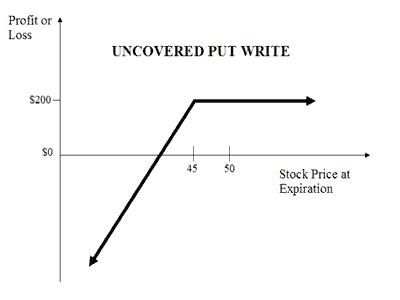
Moreover, there could be substantial credit risk because a counterparty may be unable or unwilling to fulfill the contract. Futures contracts solve these problems by standardizing the terms of the contract and by having the exchange of the futures contract serve as a counterparty to both the long and the short position. But for many in the market, futures will not serve as a perfect hedge — hence, various strategies must be considered to achieve the best hedge possible. A crude oil producer is planning to sell 500,000 barrels of crude oil in the cash market in December (they are said to be “long” the commodity).
- And the Bearish scenario is ten years earnings model with only €100 million average earnings and just a 10% return on additional trading capital, leading to a 5% growth rate.
- However, there are risks; unless you work in the company, it’s impossible to understand their business comprehensively.
- So, from a conservative perspective, the average expected return for Flow is around 12%.
- A perfect hedge is a position undertaken by an investor that would eliminate the risk of an existing position, or a position that eliminates all market risk from a portfolio.
- We use daily data of five global indices from 01 March 2017 to 15 May 2022.
So if on the delivery date, the price of wheat is high, then the farmer will profit on the sale of his wheat but lose on the futures contract. If the price of wheat is low, then the farmer loses on the sale of his wheat but gains on the futures contract. Perfect hedges exist in theory, but in most cases, the hedges are not worth the amounts for any period of time except in markets with the most volatility. There are several asset types, however, they are usually called perfect hedge.
Why Is Risk Reduced In a Perfect Hedge Position?
In this context, the perfect hedge refers to a safe place for capital in volatile markets. This list comprises liquid assets such as short-term notes and cash, and less liquid investments such as real estate and gold. Finding pro forma with every perfect hedge requires very little research, but the idea is that they’re less linked to financial markets than other places where you can pack your money. Assume a refinery is planning to buy the same amount of crude oil in the same spot market and the refinery wants to hedge the December price and its profit against the price fluctuations.
What are the two basic types of hedges?
The two basic types of hedges involving the futures market are long hedges and short hedges, where the words ‘long’ and ‘short’ refer to the maturity of the hedging instrument. For example, a long hedge might use Treasury bonds, while a short hedge might use 3-month T-bills.
I think the average annual net income should be somewhere around €150 million, maybe even €200 million if there is more volatility. So the Americas market is 18.6x larger, but profits are only 4.7x higher. Stocks have consistently outperformed bonds, gold and other assets over a long time horizon, he said. In the wake of proliferation of cryptocurrencies and growing concerns regarding their environmental impact, we investigate the dynamic co-movement of digital assets and environmentally sustainable assets. We use daily data of five global indices from 01 March 2017 to 15 May 2022.
Which Is The Perfect Hedge For You?
Nevertheless, the following strategies are effective when adapted for the for the risk being hedged (return drawdown, volatility, lights out scenario). Basis risk arises because a futures contract does not perfectly mirror the price of the underlying commodity. Although a perfect hedge eliminates risk in a theoretical world, hedging in the real world has risks. Two of the most important of these risks are liquidity and basis risks.

However, because I can’t be sure about their business model’s long-term sustainability, I only calculated 10 years of earnings. After that, I assumed they would close operations and distribute all the accumulated cash to shareholders, discounted accordingly. We then show how to modify this approach to solve the problem in a market with partial information, the one in which we have only a prior distribution on the vector of return rates of the risky assets.
Diversification
A perfect hedge is an investment vehicle designed to mitigate the financial risk inherent in a portfolio of investments and/or in the normal course of business. This is the chance that the return will be less than anticipated due to changes in market value; an investment exposed to the full risk of a market is said to be in a naked position. Hedge investments are made to offset, or cover, this position and help ensure a minimally acceptable return. A loss in the value of an investment would be offset by a gain in value for its hedge. A perfect hedge is an investment that offsets 100% of the risk inherent in another investment. To offset all risk, the correlation, or relative gain or loss in value, between the investments must be exactly opposite.

The results suggest that environmentally sustainable indices and cryptocurrency indices demonstrate co-movements during pandemic. However, in the normal times, they mostly remain detached from perfect hedge each other. Therefore, it can be argued that both the asset classes can serve as hedge against each other. The findings carry important implications for the investment industry and regulators.
Virtu Financial
Thomas J Catalano is a CFP and Registered Investment Adviser with the state of South Carolina, where he launched his own financial advisory firm in 2018. Thomas’ experience gives him expertise in a variety of areas including investments, retirement, insurance, and financial planning. Additionally, Flow Traders has no interest debt and has around €600 million book value with more than €500 million net cash, compared to the market cap of €1.25 billion.
What is the difference between partial hedge and full hedge?
Fund level hedging
If a minimum of 90% of the foreign currencies in the fund are permanently hedged, openfunds considers it a “full portfolio hedge”. If, on the other hand, less than 90% of the foreign currencies are hedged, either on a permanent or temporary basis, openfunds considers it as a “partial hedge”.
()